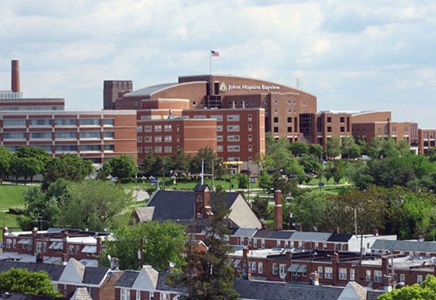Pancreatic Pseudocysts
What are pancreatic pseudocysts?
Pancreatic pseudocysts are collections of leaked pancreatic fluids. They may form next to the pancreas during pancreatitis.
The pancreas is an organ that sits behind your stomach. It makes fluids that flow through a duct into the small intestine. These fluids help you digest food. The pancreas also releases hormones to help control blood sugar. This includes insulin.
Pancreatitis occurs when there is inflammation of the pancreas. When the pancreas gets inflamed, it may leak digestive enzymes. This damages the pancreas. This causes collections of fluid to form. These are called pancreatic pseudocysts.
Pancreatic pseudocysts are different from true pancreatic cysts. Both cysts and pseudocysts are collections of fluid. A true cyst is a closed structure. It has a lining of cells that separates it from the nearby tissue. A pseudocyst isn’t closed and doesn’t have a lining of epithelial cells separating it from the nearby tissue. This difference is important. The cause of these conditions and treatments may vary. Also, some true cysts are cancer. Pancreatic pseudocysts are rarely cancer. But they may need to be drained if you have pain or infection.
Pancreatic pseudocysts are not the same thing as pancreatic abscesses. Abscesses also form during pancreatitis. But they include fluid and semisolid parts. Pseudocysts contain only fluid.
A lot of people with pancreatitis get pseudocysts. Pancreatitis is a fairly common issue. It’s more common in men than in women. It can affect people of all ages.
What causes pancreatic pseudocysts?
Pseudocysts form when the cells of the pancreas become inflamed or are injured and pancreatic enzymes start to leak. Leaking of the enzymes harms the tissue of the pancreas.
Pancreatic pseudocysts may start after an episode of sudden (acute) pancreatitis. People with chronic pancreatitis can also get pseudocysts. They may also form in conditions that cause long-term pancreas inflammation (chronic pancreatitis).
Having gallstones and drinking a lot of alcohol are the two most common causes of pancreatitis. Some other causes of it include:
- Pancreas injury or trauma
- Pancreas infection
- Pancreatic tumor
- High levels of calcium in your blood
- Very high levels of blood fats (cholesterol)
- Pancreatic damage from medicines
- Autoimmune diseases
- Conditions that run in your family that harm the pancreas. These include cystic fibrosis.
Who is at risk for pancreatic pseudocysts?
You may have a higher risk for pseudocysts if you have a health issue that can cause pancreatitis. These include gallstones. You may be able to decrease your risk by treating your health condition. Drinking less alcohol may also lower your risk.
What are the symptoms of pancreatic pseudocysts?
Symptoms of pancreatitis and pseudocysts may include:
- Stomach pain. This may go around to your back.
- Fever
- Swollen belly
- Nausea and vomiting
- An abdominal mass detected on physical exam
Severe pancreatitis may also cause dehydration and low blood pressure. Complications from pseudocysts may cause other symptoms.
Sometimes you may not have any symptoms. This pseudocyst might show up on an imaging test done for another reason.
How are pancreatic pseudocysts diagnosed?
Your healthcare provider will ask about your health history, symptoms, and other health conditions. He or she will also give you an exam, focusing on your abdomen.
To diagnose pancreatitis, your healthcare provider may do tests. These may include:
- Tests that look for high levels of pancreatic enzymes in your blood
- Tests for other substances. These include sodium, potassium, and glucose.
- Tests to find the cause of the pancreatitis. These include tests for blood fats.
- Imaging tests. These may include an abdominal ultrasound or CT scan.
Your healthcare provider will rule out other causes of your symptoms. He or she will check you for an ulcer, inflammation of your gallbladder, and pancreatic cancer.
Your healthcare provider can often confirm a pseudocyst with CT or with another imaging test, such as MRI. Your provider may use a special internal ultrasound called an endoscopic ultrasound.
If the diagnosis is still unclear, your healthcare team may take a sample of the fluid in your cyst. This test uses a long, thin needle and imaging guidance. Your healthcare team will need see if you have a pseudocyst instead of a true pancreatic cyst (which might be cancer) or an abscess.
How are pancreatic pseudocysts treated?
Treatment often happens in two parts. You will have treatment for pancreatitis and treatment for the pseudocyst. To treat the pancreatitis, you may need the following:
- Rest
- IV (intravenous) fluids
- Pain medicines
- Medicines to prevent vomiting
You may also need nasogastric feedings. In nasogastric feeding, you get nutrition in liquid form. You will receive it through a long, thin tube. This tube is put through your nose and into your stomach. You may also not be able to eat or drink anything for a while so that your pancreas can rest.
Sometimes the tube is placed lower into the small intestine. This is called nasoenteral feeding. It is commonly used if the pancreatitis is severe.
Treatment for the pseudocyst may vary. Many pseudocysts will go away with supportive care. Your healthcare provider may just watch your pseudocyst. Your healthcare provider will carefully check you for complications. You may also need another imaging test to check if your pseudocyst goes away.
If your pseudocyst is large or hasn’t gone away over time, your healthcare provider may treat it. He or she may put a thin tube (catheter) through your abdomen to drain the pseudocyst. This is done with the help of medical imaging. Or the cyst may be drained endoscopically. This means it may be done by entering the ducts of the pancreas through your stomach. In other cases, you may need surgery to drain your pseudocyst.
What are the complications of pancreatic pseudocysts?
Pseudocysts can cause severe issues. They can even cause death if they are not treated right away. Fortunately, most problems are fairly uncommon. Possible complications include:
- Cyst infection. This may lead to sepsis and shock.
- Cyst hemorrhage
- Bleeding into your spleen or a blood clot in a spleen vein
- Blockage of the bile duct. This may cause yellowing of your skin and eyes (jaundice).
- Portal hypertension
- Gastric outlet obstruction
- Cyst rupture
If you have these problems, you will likely have surgery or another treatment to drain the cyst.
When should I call my healthcare provider?
If you have a pancreatic pseudocyst, know it may cause complications. Many of these need medical attention right away. See your healthcare provider right away for any severe or sudden symptoms. These include throwing up blood, fever, dizziness, yellowing of your skin, or severe stomach pain.
Key points about pancreatic pseudocysts
- Pancreatic pseudocysts are collections of leaked pancreatic fluids. They may form next to the pancreas during pancreatitis.
- Having gallstones and drinking a lot of alcohol are the two most common causes of pancreatitis.
- Most people with pseudocysts will have stomach pain, vomiting, and other symptoms of pancreatitis.
- Your healthcare provider can like diagnose a pseudocyst with a CT or another imaging test.
- Many pseudocysts get better without treatment. If your pseudocyst is large or hasn’t gone away over time, your healthcare provider may drain it.
Next steps
Tips to help you get the most from a visit to your healthcare provider:
- Know the reason for your visit and what you want to happen.
- Before your visit, write down questions you want answered.
- Bring someone with you to help you ask questions and remember what your provider tells you.
- At the visit, write down the name of a new diagnosis, and any new medicines, treatments, or tests. Also write down any new instructions your provider gives you.
- Know why a new medicine or treatment is prescribed, and how it will help you. Also know what the side effects are.
- Ask if your condition can be treated in other ways.
- Know why a test or procedure is recommended and what the results could mean.
- Know what to expect if you do not take the medicine or have the test or procedure.
- If you have a follow-up appointment, write down the date, time, and purpose for that visit.
- Know how you can contact your provider if you have questions.







